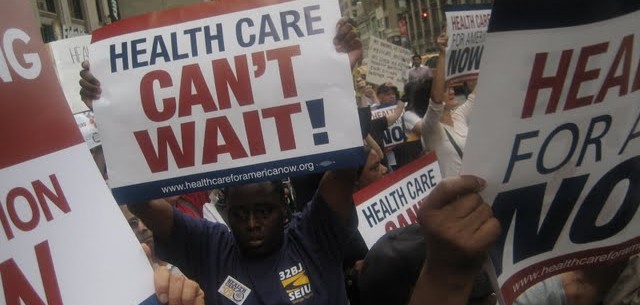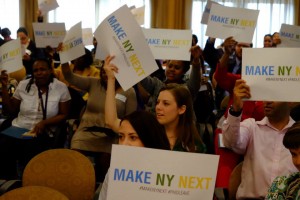The first three months of each year’s state legislative session in Albany always centers around adopting a tax and spending plan for the new fiscal year that starts on April 1st. Advocates and other stakeholders pour over the governor’s initial proposals in late January, urge the legislature to make changes to it during February and early March, and hope for the best as the final negotiations transpire behind closed doors in the closing week or two.
 This year, health care advocates involved in the Health Care for All NY and Medicaid Matters NY coalitions promoted several ideas, and pushed-back against others. Pro-actively, they sought:
This year, health care advocates involved in the Health Care for All NY and Medicaid Matters NY coalitions promoted several ideas, and pushed-back against others. Pro-actively, they sought:
- Continued and stable funding ($4M) for the Community Health Advocates (CHA) program that helps health insurance policyholders of all sorts (public, private, employer) solve coverage problems they may experience with either their health plan and/or care providers. They also help uninsured people located free or low-cost care in their community. (CHA is a statewide network of non-profit organizations serving all counties, and is anchored by the Community Service Society of NY, Empire Justice Center, Legal Aid Society, and Medicare Rights Center. CHA is the state’s official “consumer assistance program” created under the Affordable Care Act.) Result: $3.25M in funding approved.
- New funding ($2M) for community-based, non-profit organizations to undertake public education and outreach programs to the still-uninsured to inform them about their possible new coverage options under the Affordable Care Act, and direct them to enrollers located in the community, or at hospitals and health centers. Result: no funding included.
- New funding ($10.3M) to expand health insurance coverage under the state’s new (and very successful) “Essential Plan” (EP) to certain lawfully-present immigrants (primarily young adults) who can enroll in Medicaid, but not this new option when their income rises above the Medicaid level. (EP coverage is very low-cost, and available for working poor individuals and families who are not eligible for Medicaid.) Result: no funding included.
- Allow people leaving incarceration to apply for Medicaid 30 days before their release, rather than have to wait until afterwards. Result: approved.
- Expand Medicaid coverage for additional mental health services for children, including crisis intervention, community psychiatric treatment, psycho-social rehab, family peer support, youth peer support, and services from additional licensed providers. Result: approved
- Provide capital funding to community-based health care providers for delivery system reform, and not just institutional ones. Result: $30M approved (out of $200M allocated system-wide)
More successfully, advocates were able to get the legislature to reject several troubling proposals from the governor, including:
- Ending the rights of spouses and parents to refuse to have their own income and assets taken in consideration when applying for Medicaid coverage for long-term care services for their disabled spouses and children.
- Drastically reducing the amount of assets that spouses can maintain when their spouses apply for Medicaid coverage for long-term care services.
- Ending current “prescriber prevails” policies that allow doctors to appeal denials of coverage for particular drugs by a given Medicaid health plan.
- Tightening eligibility standards for managed long-term care under Medicaid.
- Remove coverage for medically-related transportation services from Medicaid-covered managed long-term care plans, and shifting them to a separate third-party contractor.
- Shift $500M in Medicaid costs to New York City as part of their “local share”.
One issue that got “punted” concerned the creation of a new “Health Insurance Guaranty Fund.” In the wake of the financial collapse of Health Republic (New York’s non-profit health insurance co-op) last fall, it turned out that New York is the only state not to have a “guaranty fund” in place for health insurers. The state does have such funds for other insurance product lines. Such funds help pay-off the insurers debts that may exceed the value of a company’s assets once liquidated. Instead, the Legislature directed state officials to create a one-time fund to reimburse doctors and hospitals that are owed payments, using proceeds from fines and financial settlements in legal and regulatory cases. Advocates had supported the general concept of a health guaranty fund, but urged that it not be funded by additional assessments on consumers’ insurance premiums, a position also supported by insurers.





